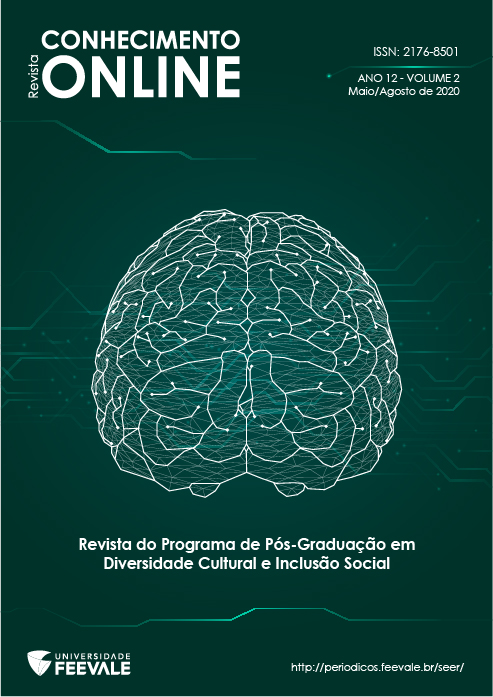LIMIARES NO HOSPITAL: BORDAR HISTÓRIAS, ESCREVER MEMÓRIAS
DOI:
https://doi.org/10.25112/rco.v2i0.2124Abstract
RESUMO
Este artigo apresenta as narrativas das estratégias metodológicas de uma pesquisa-intervenção, desenvolvidas em três tempos, de 2015 a 2018, desde a chegada da equipe na calçada de um hospital geral de Porto Alegre (RS) até o encontro do Setor de Dor e Cuidados Paliativos como parceiro para desenvolver um dispositivo de trabalho que se intitulou Ateliê Jardim de Histórias. O dispositivo convidou pacientes diagnosticados com dor crônica a contar histórias, suas ou do mundo, verdadeiras ou inventadas, por meio de superfícies de inscrição (caixa, toalha) para essas histórias. A constituição do formato da pesquisa-intervenção aconteceu em um tempo estendido, escutando o contexto hospitalar por pelo menos dois anos, até inaugurar um formato que teve o bordado livre sobre uma maca hospitalar como mediador do diálogo. A aposta/hipótese de pesquisa é que, ao oferecer uma superfície de inscrição como a toalha, ela faça as vias de passagem para que a dor, significada como apenas orgânica, desloque-se para outro registro de significação, mais simbólico. Enquanto bordavam, os pacientes narraram suas histórias e inscreveram na toalha fragmentos de memórias, registro singular pela via da palavra. Os fundamentos da pesquisa-intervenção têm inspiração teórica em Walter Benjamin, na psicanálise de Freud e Lacan, além da Arte Contextual de Paul Ardenne. É um trabalho tecido por muitas mãos e fios teóricos que conduzem para a ideia do “tecer com o outro”, numa aposta de que o estabelecimento de práticas da relação entre sujeitos e diferentes campos do saber pode contribuir para o cuidado humanizado em saúde.
Palavras-chave: Narrativas. Saúde. Arte. Psicanálise. Educação.
ABSTRACT
This article presents the narratives of the methodological strategies of a research-intervention, developed in three stages, from 2015 to 2018, from the arrival of the team on the sidewalk of a general hospital in Porto Alegre (RS) to the meeting with the Sector of Pain and Palliative Care as a partner to develop a working device named Atelier Jardim de Histórias (Garden of Stories Atelier). The device invited patients diagnosed with chronic pain to share stories, their own or the world’s, real or fabricated, through inscription surfaces (boxes, towels) for these stories. The establishing of the intervention-research’s format took place over an extended period of time, listening to the hospital context for at least two years, until the unveiling of a format that had free embroidery on a hospital stretcher as a mediator of dialogue. The research bet/hypothesis is that, by offering an inscription surface like a towel, it produces the passage ways so that the pain, signified as only organic, moves on to another register of meaning, a more symbolic one. While embroidering, patients narrated their stories and inscribed fragments of their memories on the towel, a singular record through the Way of Word. The foundations of the research-intervention have theoretical inspiration in Walter Benjamin, in the psychoanalysis of Freud and Lacan, in addition to the Contextual Art of Paul Ardenne. It is a work woven by many hands and theoretical threads that lead to the idea of “weaving with the other”, in a bet that the establishing of practices in the relationship between subjects and different fields of knowledge can contribute to humanized health care.
Keywords: Narratives. Health. Art. Psychoanalysis. Education.
Additional Files
Published
How to Cite
Issue
Section
License
• Os autores mantêm os direitos autorais e concedem à revista o direito de primeira publicação com o trabalho licenciado sob a Licença Creative Commons - Attribution 4.0 International (CC BY 4.0).
• Os autores são estimulados a publicar e distribuir seu trabalho online (ex.: em repositórios institucionais ou na sua página pessoal), pois isso pode aumentar o impacto e a citação do trabalho publicado.


